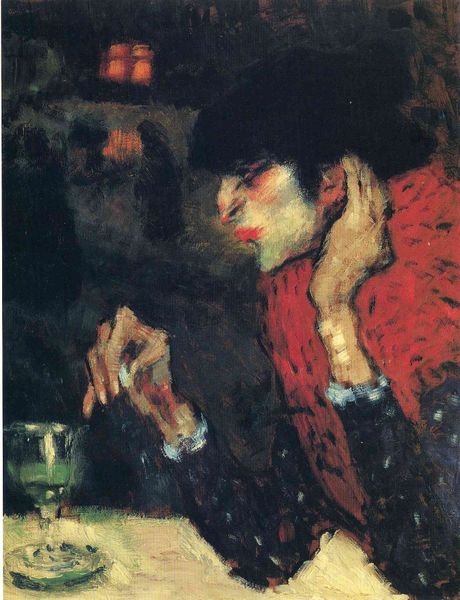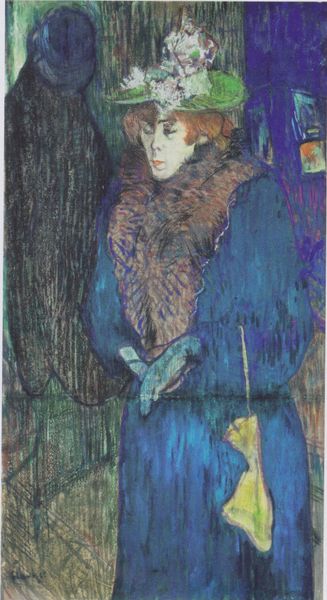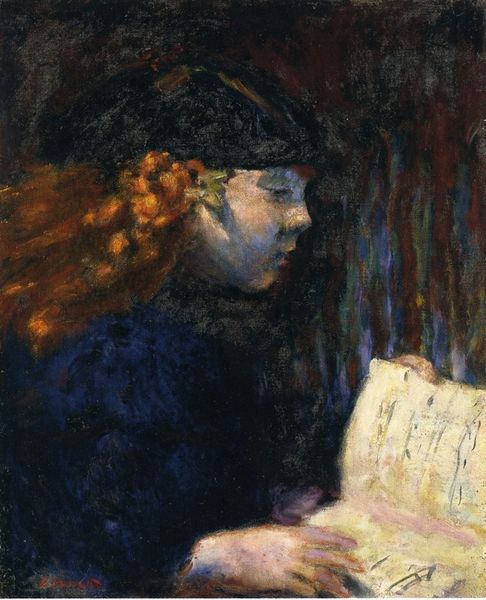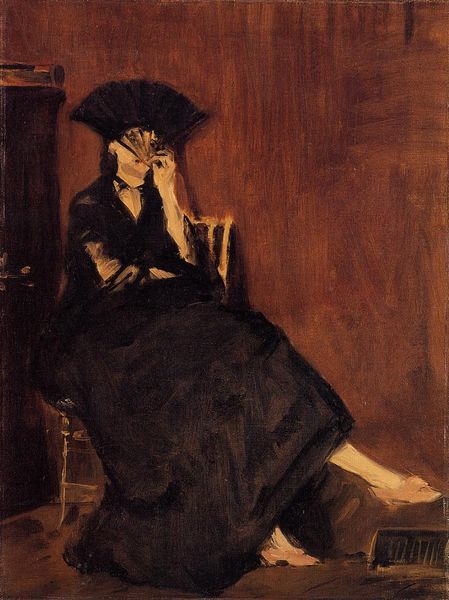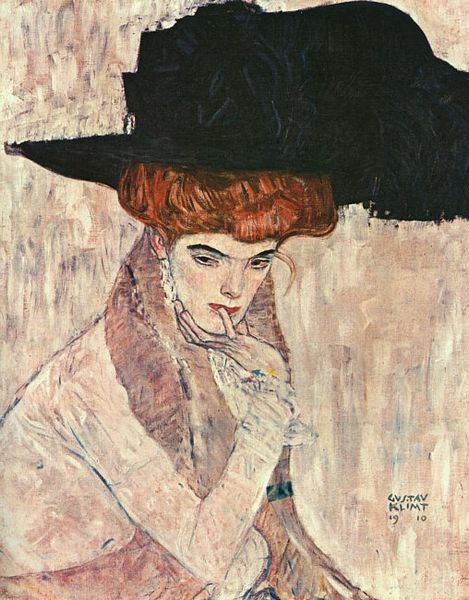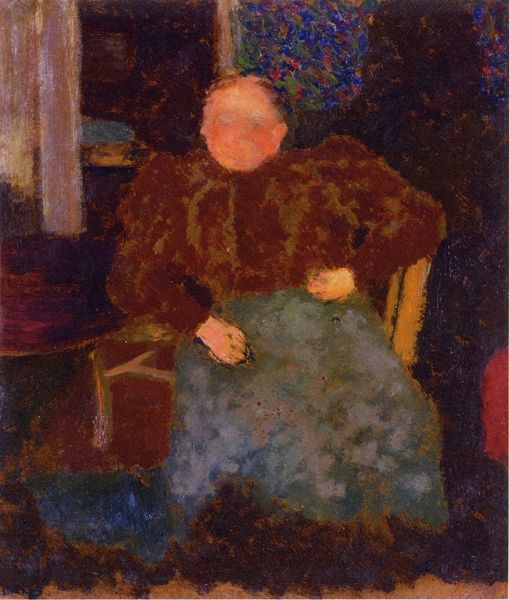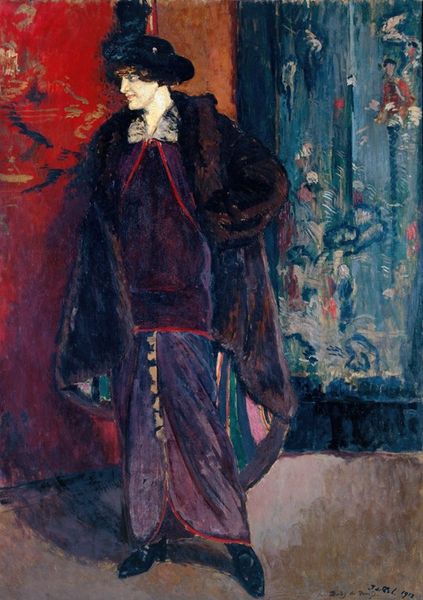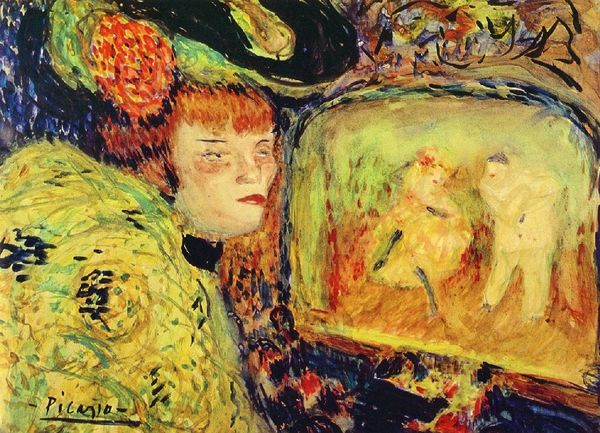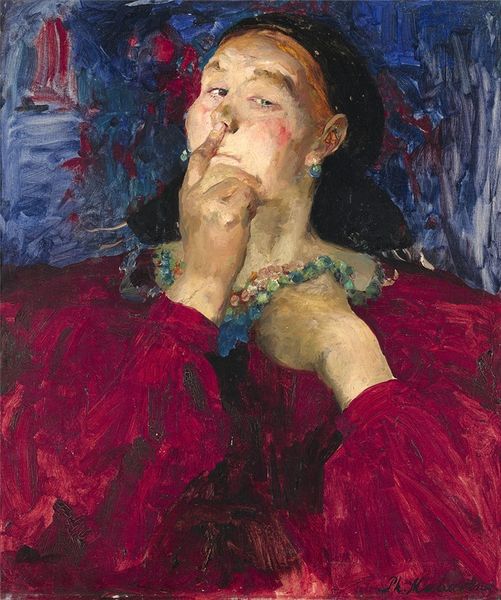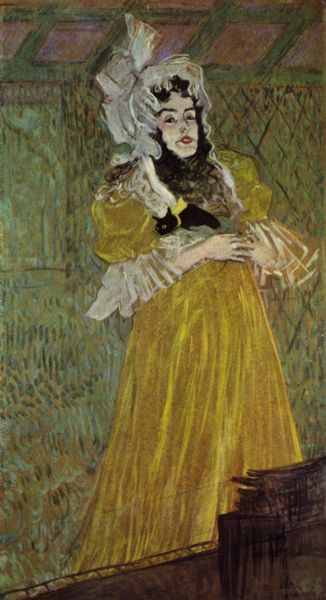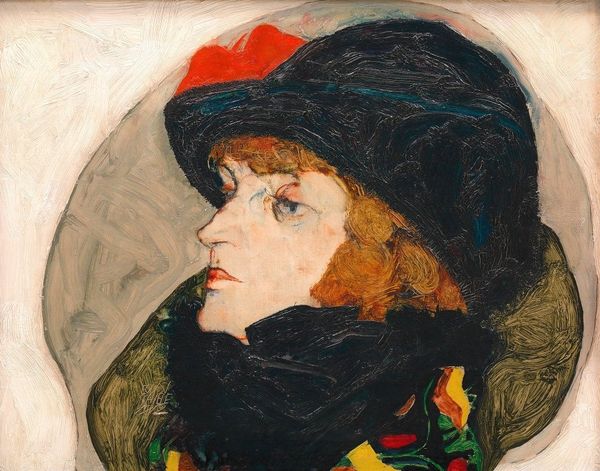
Dimensions: 69 x 55 cm
Copyright: Public domain
Feeling chilly? The woman in Gustav Klimt’s Lady with Hat and Featherboa (1909) is bundled in black fur, complete with an oversized hat. Her pale skin and the touches of warm red in her hair, cheeks, and lips are distinctive against the dark shades of her clothing and the unilluminated background. The Austrian painter Gustav Klimt (1862-1918) cofounded the Vienna Secession in 1897. The Secession was a group of artists who opposed the official customs of the prestigious Vienna Academy of the Arts, which promoted historical painting and traditional techniques. Instead, the Vienna Secession exhibited unconventional and non-academic works in a wide variety of styles. Best known as a ‘painter of women’, Klimt integrated features of several diverse styles, from Symbolism to Art Nouveau and Japanese influences, into his paintings. The identity of the woman in Lady with Hat and Featherboa is unknown, yet she exudes the wealth and luxury of fashionable Viennese high society. Alongside countless works that did not conform to the artistic restrictions enforced by the Nazi regime, this painting was confiscated by the Nazis during the Second World War. More recently, it was returned to the heirs of its original owner by the Austrian Gallery Belvedere. The woman’s face is partly covered by her feather boa, and she glances away from the viewer as if refusing to meet their gaze. Klimt has applied thick, loose brushstrokes, reminiscent of flickering flames, to build the fiery tones of her red hair. Together, these symbols create a subtle impression of enticing mystery and danger. Perhaps Klimt sought to represent the woman as a seductive and enigmatic femme fatale. Does this offer an explanation for the seizure of this painting by the Nazi regime? Editor: Lucy Jude Grantham
Comments
No comments
Be the first to comment and join the conversation on the ultimate creative platform.
